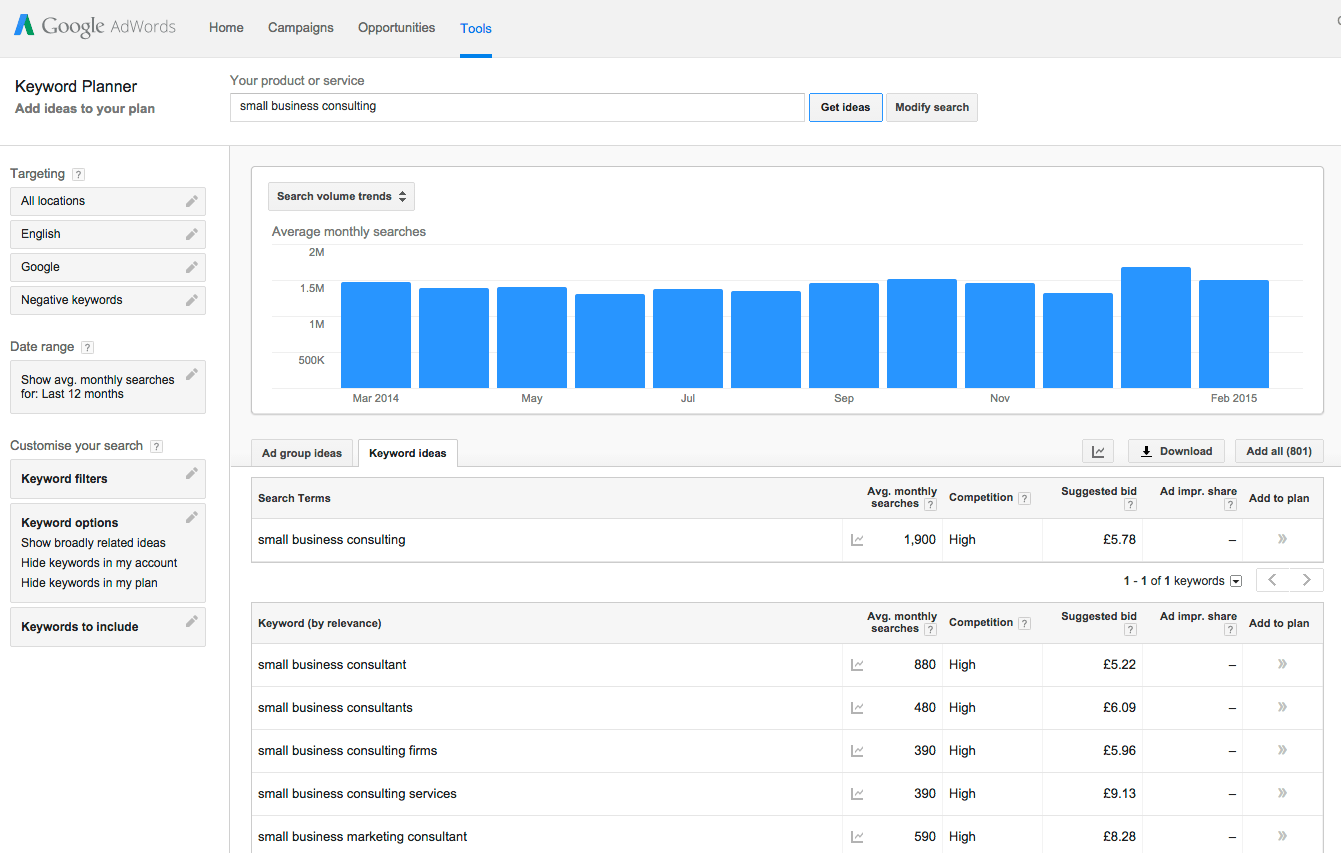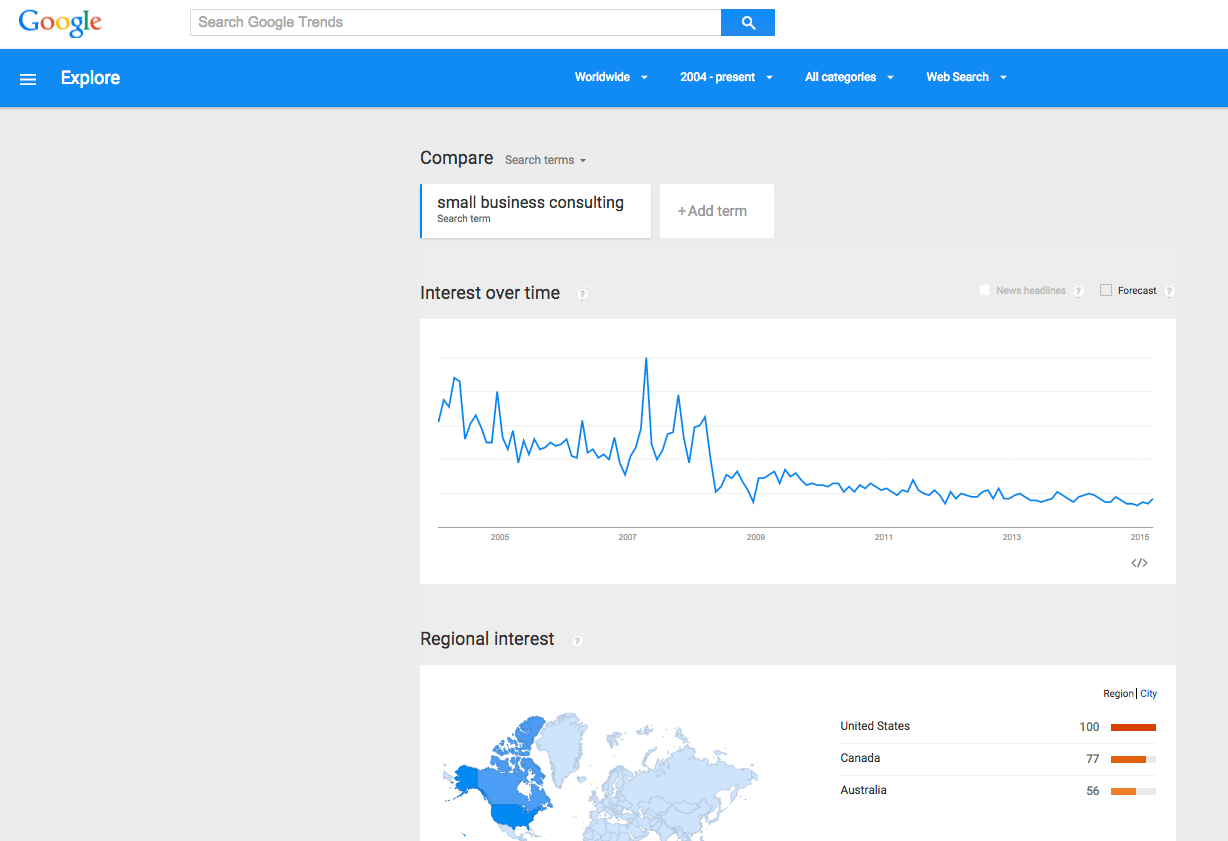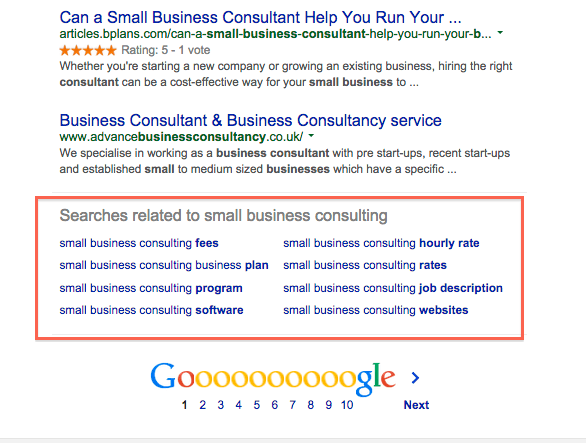Choosing the right keywords to target is one of the areas that can have the greatest impact on your website’s success. Get it right, and your traffic from search engines will grow – and sales should follow suit. Yet many small businesses are still not focusing on the keywords that would work most effectively for them. Why is this?
Often it’s down to lack of time taken to do the initial research, which leads to keyword choices that are either too broad, too competitive or unlikely to convert. Or it can be due to a lack of knowledge of the free tools that can make the process easier and eliminate the guesswork (more on those below). Whatever the answer, keyword research strategy is not especially complicated, but the return on time invested can be significant. Don’t skimp on it.
Let’s begin by looking at what not to do:
5 mistakes to avoid in your keyword research
Keep these potential errors in mind when doing your own research.
1. Targeting single-word phrases
Aiming for single words is generally not wise: it’s difficult to optimise a page for them; the intent of the searcher is often not clear; and competition can be high, which will make it hard to rank anywhere significant for that term.
2. Targeting high-competition phrases
Following on from the point above, you’re probably likely to have more success if you go after long-tail queries, where there is less search volume but also less competition. Also, long-tail queries often demonstrate greater intent (eg someone searching for ‘french cuff shirt pink’ is probably closer to buying than someone searching ‘types of shirt’). It’s better to rank on the first page of Google for a term that gets 100 searches a month, than on the fourth page for one that gets 10,000 searches.
3. Ignoring location qualifiers
If your business is local, make sure you are adding the city or area where you are based as qualifiers to your keywords. These keywords will have reduced competition and the searchers represent a more relevant and valuable audience. See this article for more on best practice for local SEO.
4. Looking at global rather than local data
When you’re analysing search volume and competition for keywords in Keyword Planner, check that the location targeting is set to the most relevant country (or most relevant city). Remember that the search volume isn’t the number of clicks you could get, but the number of people searching for that term in an average month.
5. Not considering conversion likelihood
Make sure you don’t waste time and effort optimising for a keyword that won’t actually deliver what you need (whether that’s sign-ups, sales, downloads, etc). Use your website’s own analytics to ascertain what keywords have been most effective for conversions. Also keep an eye on the suggested bid estimates in Keyword Planner – search terms that are expensive are valuable for a reason (most likely, because companies have found that term is one that converts well).
The keyword research process: four steps
First step: brainstorming
Before you look at any data or use a tool, grab a pen and paper and start brainstorming ideas. First, identify your website’s user personas. What sort of information or product will that audience be looking for? Draw up a list of suitable topics.
Now take each topic in turn, and think how that audience might search for information related to that topic. This will give you a shortlist of potential keywords to consider. Let’s take an example: say your business offers dress alterations, and one of your topics is wedding dress repair. Your list of possible keywords could include:
- wedding dress repair
- wedding dress alterations
- fix wedding dress
- how much to alter wedding dress
- wedding dress alterations cost
- wedding dress alteration tips
(And if you’re a local business, don’t forget to add your city/area to each phrase to create further variants.)
Second step: analyse your own data
Next you want to bulk out your topic-based keyword lists further, by discovering where you’ve had most success with keywords and adding similar phrases you’re not currently using. If you’ve done any PPC advertising, rank your keywords in AdWords by conversion rate (filtering for a minimum level of traffic) and use the top keywords as the root for similar phrases.
You won’t see any organic keyword data in your Google Analytics account, so look at performance by page. Which pages get the most organic traffic, and which convert best? You will be able to work out from the content of those pages what their primary keywords are.
Finally, take a look in Google Webmaster Tools, where you do still get to see organic keyword data. Go to Search Traffic > Search Queries and examine your keywords for clicks and clickthrough rate relative to position. Also look in Google Index > Content Keywords, to see what words Google thinks are most significant for your site.
Third step: analyse your competitors
It’s really important to identify what keywords are working best for your direct competitors. Even if you don’t have a paid account with SEMrush, you can type in a website URL and see the top ten keywords for that site, and what percentage of site traffic it drives (via Organic Research > Positions). Equally, you can find competitor pages for products or services similar to yours, and scrutinise the title tag, H1, meta description and meta keywords, if they’ve added them (just right-click and go to View Page Source).
Once you have a list of these keywords that you know work well for your competitors and are relevant to your site, add them to the existing keyword shortlists you have for each topic.
Fourth step: use free tools to refine your keyword lists
The final step is to use the various free tools out there to refine your topic lists and produce definitive keyword sets. There are five in particular worth using. Let’s examine each in turn:
Google Keyword Planner
The daddy of keyword research tools. This will almost certainly be your primary means of examining keywords, as the data available is so extensive. You need an AdWords account to use Keyword Planner, so go ahead and sign up to get started (and skip the guided set-up to avoid having to create a campaign).
Enter each of the keywords on your topic list into the form under ‘Search for new keywords and ad group ideas’, making sure you’ve set the location correctly. Then click the tab ‘Keyword Ideas’. You’ll now see average search and competition for that keyword and variants of it:
Don’t just look at the first few options. Download all the variant keywords into a spreadsheet, then apply some filters so that you’re only looking at the most relevant terms. Then sort those by volume, and look for those longer-tail keywords that have the ideal balance of good volume but lower-than-average competition. For more detail on how to correctly select keywords with AdWords, see this useful checklist.
Google Trends
Ideally, you want to be targeting keywords that are showing a rise in demand over the last few years – and one thing you definitely want to avoid is working hard to target a keyword that is in steep decline.
You can audit your keywords in this way using Google Trends, which will show you relative (not actual) demand over time (from the past 7 days to the past 10 years), as well as which regions show greatest interest in that term. And it will show you related searches and how they are trending – great for additional keyword ideas. You can also filter by image, news or YouTube search, in case you are considering those channels specifically.
Google Related Searches
Search for a term in Google (or Bing) and you’ll see a box of related searches, either at the bottom of the SERP (Google) or on the right (Bing). This is perfect for finding long-tail variants of your keywords. Go ahead and take any of those that look good, and search for them in Keyword Planner. That should give you even more variants to use.
Google Autocomplete and Ubersuggest
Once you start typing a keyword into Google’s search bar, it will try to complete your intended query based on popular search phrases (those that are currently more in demand than usual rank higher). Open a new window in incognito mode or equivalent – important, so that you aren’t shown personalised results – and type in your chosen keyword, as below:
You can see that various popular longer-tail terms have been displayed, all of which might make for useful keywords.
Ubersuggest works in a similar way. The advantage is that it will show hundreds of variations at once, based on your main search term plus each letter of the alphabet, so it can save you lots of time. The downside is that unlike Google Autocomplete it won’t rank variations by current popularity.
Metaglossary
A useful although little-known resource, metaglossary.com provides you with definitions for a given word, including lots of related terms (see below). This is great for throwing up variations for your primary keywords: both synonyms and prefixes/suffixes.
[bctt tweet=”How to do keyword research: best tips and free tools.”]
Was this useful? What have you found most challenging about keyword research? Please let us know by leaving a comment below.










